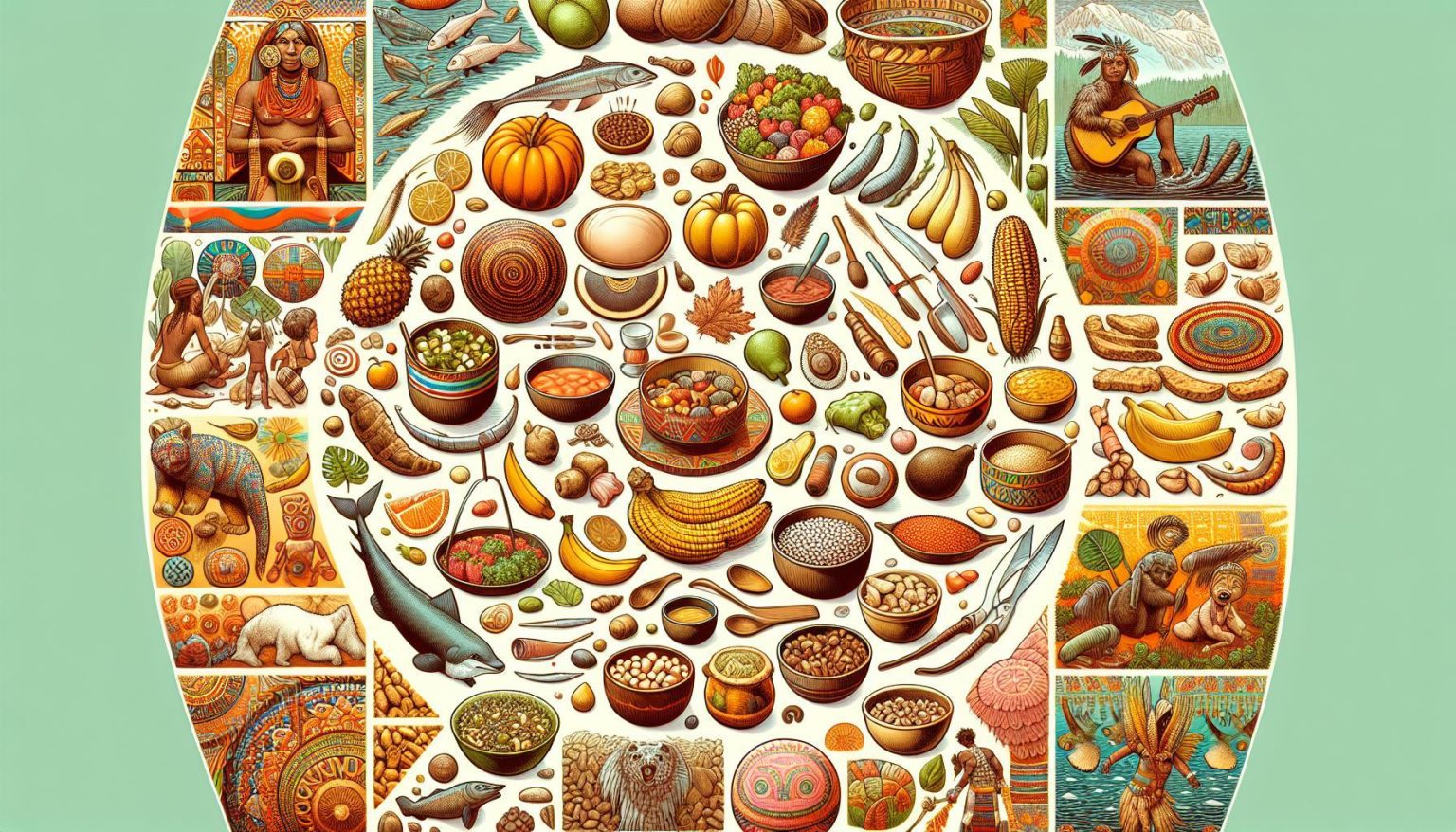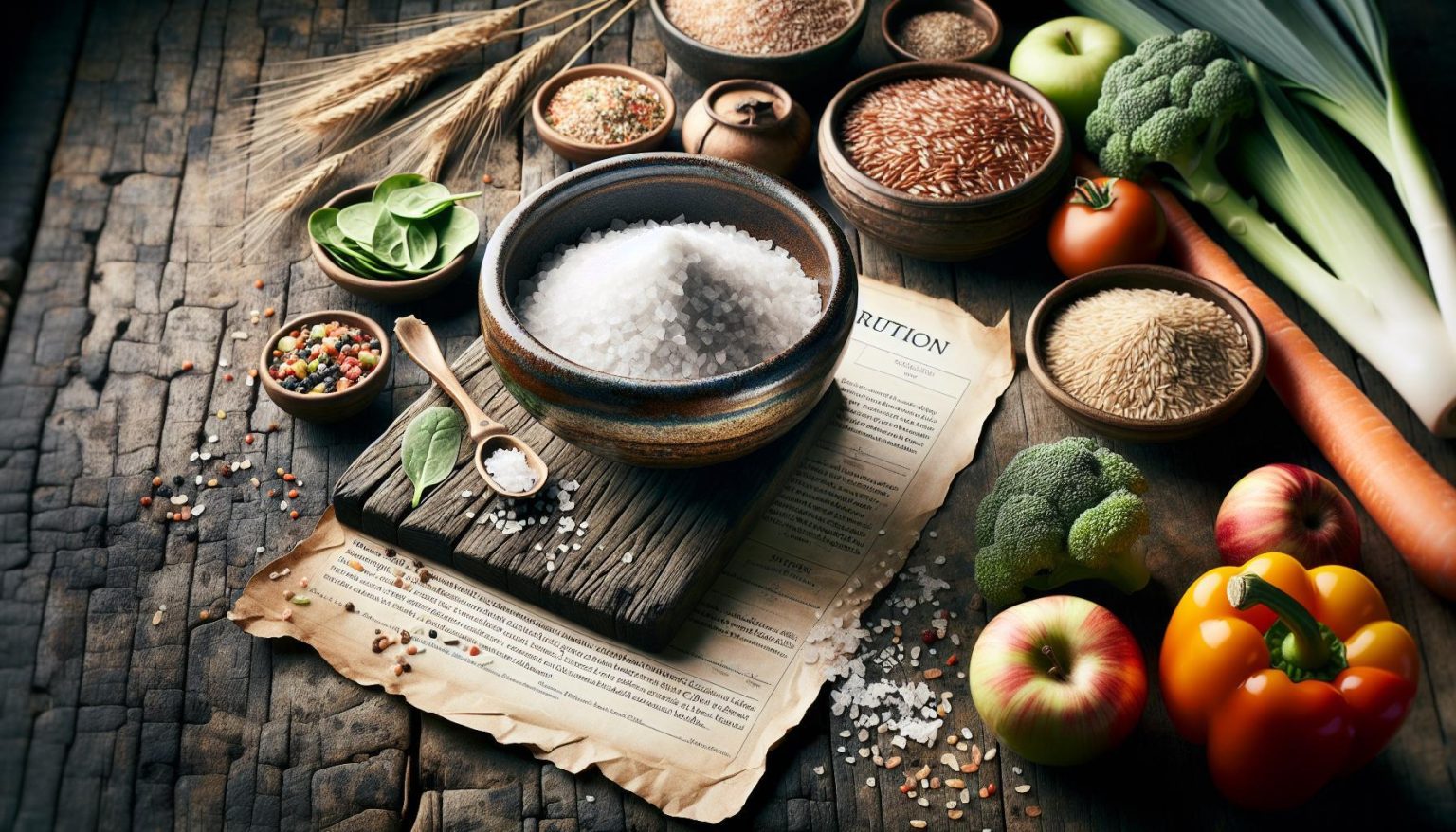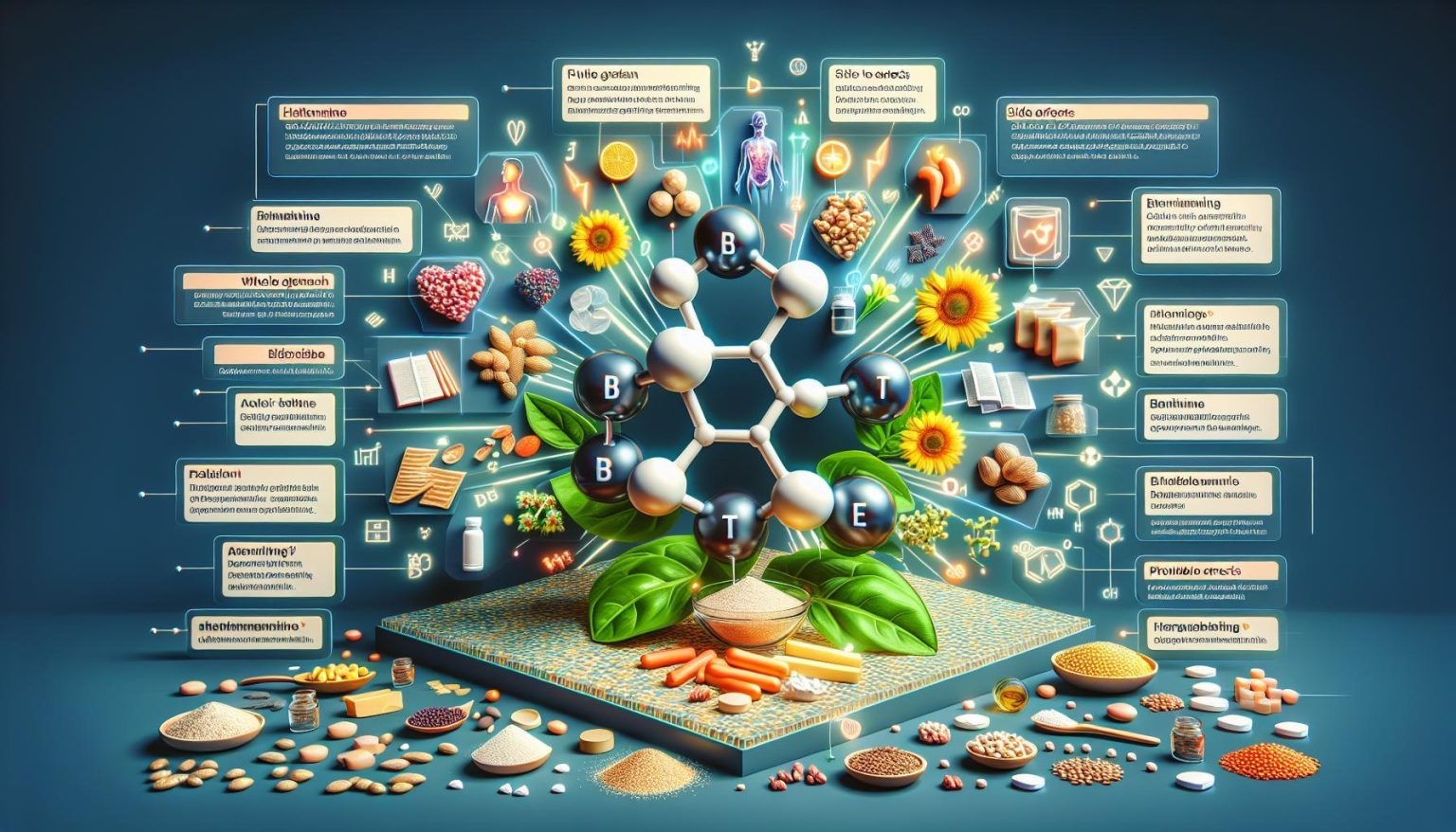The importance of food in culture and society is a topic that most societies take pride in. This is especially evident when exploring and understanding the significance of Nutritional Needs Across Cultures. An essential element that stands out in this exploration is the supremacy of traditional foods in indigenous cultures. These are foods that have been cultivated, harvested, and consumed over generations. They represent a deep-seated part of indigenous communities’ identity in terms of culture, history, and spiritual beliefs.
Introduction to the Importance of Traditional Foods in Indigenous Cultures
In indigenous cultures, traditional foods contribute significantly to the cultural fabric of the community. They go beyond nutritional fulfillment and establish a concrete link to the land and ancestors. They are cultural markers that inform the daily existence, rituals, and traditions of indigenous people. Foods such as maize for the Native Americans, or kangaroo meat for the Australian Aborigines, hold a sacred and significant value far beyond their nutritional contents.
Exploring the Connection Between Food, Land, and Culture in Indigenous Communities
The staple foods of indigenous communities are typically derived from their immediate environment, signifying a profound connection between food, land, and culture. The spiritual connection to the land is encapsulated in their eating habits, cooking methods, and the natural dietary choices they make. This sacred relationship forms an integral part of their heritage and identity.
The concept of Eating Traditions in Indigenous Cultures strongly ties to the biodiversity of their habitats. For instance, the diet from those in forested areas may contain wild fruits, nuts, and game, while those living along coastlines may have a diet rich in fish and seaweed. It shows the versatility and adaptability of indigenous peoples to their landscapes and their creativity in creating meals that are rich in flavor and nutrition.
Examining the Nutritional and Health Benefits of Traditional Indigenous Foods
From the lush Amazonian rainforest to the arid realities of the Australian outback, traditional indigenous diets have been found to be rich in essential nutrients and antioxidants. Studies have shown that these nutrition-packed foods contribute to the prevention of chronic diseases. Indigenous culinary traditions, akin to learned Mediterranean Diet Benefits, offer a wide range of health benefits.
A striking example is the traditional diet of the Bantu people of Africa. They rely on plant-based foods like beans, sweet potatoes, and greens, which are high in fiber and low in saturated fats, contributing to lower rates of obesity and heart disease. Similarly, we can look at the Nutritional Staples in East Asia, like fermented foods, sea vegetables, and tea, which have been associated with longevity and lower rates of cancer and heart diseases.
Summarily, the role of traditional foods in indigenous cultures goes far beyond satiating hunger. They help define identity, preserve cultural heritage, and build a unique relationship with the land. Join us next as we delve further into the pivotal role of eating traditions in indigenous communities in our next section: ‘Honoring Ancestral Practices: The Role of Eating Traditions in Indigenous Communities’.
Honoring Ancestral Practices: The Role of Eating Traditions in Indigenous Communities
Indigenous communities around the globe possess a deep-rooted cultural heritage, with a rich tapestry of traditions and practices that intertwine with spheres of daily life, none more so than the tradition of eating. As much a social and spiritual practice as it is a means of sustaining life, the role and significance of food extend far beyond nutrition and health in these communities. It is a significant marker of identity and heritage, key elements in preserving and passing down cultural legacies to future generations.
The Role of Food in Preserving and Passing Down Cultural Heritage
In indigenous societies, food serves as a powerful tool to maintain cultural continuity. Traditional meals, with their unique flavors, ingredients, and preparation methods are seen as embodied narratives; they tell stories about the people, the land, and the ancestry. Indigenous food systems foster respect for the land, biodiversity, and reinforce cultural beliefs. Aboriginal bush tucker in Australia or Inuit whale hunting in northern Canada, for instance, serve as living reminders of age-old traditions, cementing the bonds between present, past, and future generations.
Traditional Cooking Methods and Recipes in Indigenous Communities
Embedded in the heart of indigenous communities are traditional cooking methods that have been nurtured and refined over centuries. Fire pit cooking, smoking, stone baking represent more than cooking techniques; they represent a cultural code, etched in time, carrying forward the ancestral wisdom. Recipes, too, play an extraordinary role. They go beyond how meals are prepared; they discuss which ingredients are chosen, when and where they are harvested, how they are stored, and even who prepares them, revealing a comprehensive worldview that values harmony between nature and humans.
Communal Meals and Food Sharing in Indigenous Cultures
In indigenous cultures, food also holds a strong social relevance. Communal meals and food sharing are common in tribes such as the Native Americans and the Maori of New Zealand. These shared dining experiences are often seen as extensions of their communal living practices. Food sharing serves not only as a platform for maintaining social structure and promoting community solidarity but also provides an opportunity to pass on ancestral knowledge, oral traditions, and life skills.
Through a celebration of food, indigenous communities are enabled to honor their past, shape their present, and influence their future. The role of food, thus, becomes a potent symbol of resilience in the face of change, and continuity amidst constant transitions.
Next, we delve into How Indigenous Eating Customs Preserve Cultural Identity and Knowledge, raising the curtain on a fascinating exploration of how traditional food practices reinforce cultural identity, pass on knowledge, and bind communities together.
How Indigenous Eating Customs Preserve Cultural Identity and Knowledge
The personal, social, and cultural fabric of indigenous societies is deeply intertwined with traditional eating customs. This gives these communities a unique cultural identity linked to their native food, knowledge, and values.
A. Examining the role of traditional food in maintaining cultural identity
Traditional food plays a pivotal role in preserving the cultural identity of indigenous societies. Ingredients, preparation methods, and the final dishes served at a family or community gathering all mirror their unique heritage and lifestyle. In addition to providing essential nutrition, these foods establish a tangible relationship with their ancestors and land, acting as a symbolic representation of their history and culture.
Moreover, the survival and propagation of ancient recipes and food-related traditions serve as an enduring affirmation of their distinct cultural identity. They narrate stories of their past, maintain their cultural and biological diversity, and offer an intrinsic, unbroken connection to their ancestral homeland.
B. Discussing the transfer of knowledge and values through food-related activities
In indigenous societies, the knowledge of traditional foods is not only a culinary art but a repository of their cultural wisdom and intrinsic values. This wisdom is shared and passed down through generations during food-related activities like hunting, fishing, gathering, farming, and cooking.
These activities educate younger generations about their community’s understanding of the universe, their integral relationship with nature, the value of sustainability, and their holistic view of health and wellbeing. Therefore, food-related activities act as a vehicle for the intergenerational transfer of knowledge and tradition – preserving heritage while promoting cultural continuity.
C. Exploring the ways in which traditional foods and practices strengthen community ties
The practice of traditional food preparation and consumption not only preserves cultural knowledge but also strengthens community ties. Meals are often communal events where stories are passed on, wisdom is shared, and relationships are fortified. The practice of hunting, gathering, and farming together promotes mutual respect, cooperation, and unity – fundamental principles underlying these societies.
These traditions instil a sense of belonging and connection, creating a caring and supportive community environment. By sharing a meal, they are sharing their culture, values, memories, thus reinforcing their collective identity and further strengthening their community bonds.
This relationship between food and societal structure brilliantly showcases how indigenous eating customs aid in preserving cultural identity and knowledge, becoming a pillar of community life and cultural heritage.
Exploring the Spiritual and Symbolic Meaning of Food in Indigenous Cultures
The connection that exists between food and spirituality is a significant pillar in indigenous cultures. From the Aboriginal people of Australia to the Native American tribes of North America, traditional foods are an integral part of spiritual beliefs and ceremonies. These staple foods hold profound symbolic meanings that extend beyond the confines of nourishment, forming an inextricable link with the spiritual realms of these communities.
Discussing the Spiritual and Symbolic Significance of Traditional Foods
In indigenous societies, food is more than a basic need to sustain life; it is deeply embedded in the cultural fabric and serves as a spiritual compass. Each food item holds significance and often symbolizes principles, blessings, or notions that these cultures hold dear. For instance, amongst the Native American tribes, corn, beans, and squash – known as the “Three Sisters” – are not just super-foods that have sustained these tribes for years. They represent the principle of mutual support and harmony with nature.
These symbolic associations with food are centered around circle-of-life philosophies, showing respect for the environment and emphasizing the interconnectedness of all life forms. As such, the spiritual significance of these traditional foods often underlines the knowledge and wisdom passed down through generations in indigenous tribes.
Exploring the Rituals and Ceremonies Associated with Indigenous Food Consumption
The spiritual dimensions of food in indigenous cultures are further illustrated through various rituals and ceremonies. Often these traditions are key in marking significant life events or expressing shared cultural beliefs. For instance, in many Aboriginal communities, the ‘Dreaming tracks’ or ‘Songlines’ are used as an edible roadmap tracing the journeys of their ancestral spirits. These paths are marked with the use of traditional foods – traced throughout the landscape using a unique set of indigenous knowledge about country and food sources.
The practice of food rituals is not just a celebration of abundance but a way to express gratitude to the natural world. Such ceremonies signify the strong bond indigenous communities maintain with Mother Earth, appreciating her bountiful resources and highlighting their unwavering respect for the environment.
Highlighting the Role of Food in Storytelling and Oral Traditions in Indigenous Cultures
Just as food nurtures the body, storytelling and oral traditions in these cultures nurture the soul. And at the intersection of these two important facets is where you find food stories – where traditional foods play a game of hide and seek, peeking through the intricate tapestry of tales.
These stories are not just amusing narratives to entertain; they present a wise and respectful approach to dealing with nature, especially the traditional foods. Woven with lessons, they transmit wisdom, knowledge, morals, and values from generation to generation. It’s through these stories that indigenous cultures have preserved their food systems and practices, despite drastic changes in the world around them.
The spiritual and symbolic aspects of traditional foods form a vital component of indigenous cultures, not only providing sustenance but also serving as a platform for carrying forward their cultural heritage and ancestral wisdom.
Now, after understanding the spiritual and symbolic importance of traditional foods, let’s delve deeper into how colonization impacted these indigenous eating traditions and the efforts to preserve them.
Conclusion
Traditional foods are a cornerstone of indigenous cultures, serving as a means of preserving cultural identity, passing down ancestral knowledge, and connecting communities to their heritage. Despite the challenges posed by colonization, indigenous communities continue to uphold their traditional food practices, recognizing the vital role these foods play in maintaining a sense of identity and well-being.
Frequently Asked Questions
1. How do indigenous eating traditions contribute to cultural preservation?
Indigenous eating traditions are deeply intertwined with cultural preservation, as they serve as a tangible link to the past and a means of passing down ancestral knowledge and values.
2. What is the significance of communal meals in indigenous cultures?
Communal meals foster a sense of community and togetherness within indigenous cultures, serving as a vital social and cultural practice.
3. How has colonization impacted indigenous eating traditions?
Colonization led to the displacement and loss of traditional indigenous food practices, disrupting food sovereignty and cultural identity within indigenous communities.
4. What efforts are being made to reclaim and revitalize traditional indigenous food practices?
Indigenous-led initiatives focused on food sovereignty and sustainability are working to restore the connection between indigenous peoples and their traditional foods, ensuring that these vital practices are preserved for future generations.
5. How can individuals support indigenous food sovereignty and sustainability efforts?
Individuals can support indigenous food sovereignty and sustainability efforts by engaging in ethical sourcing and consumption practices, as well as advocating for policies that prioritize the rights and well-being of indigenous communities.










